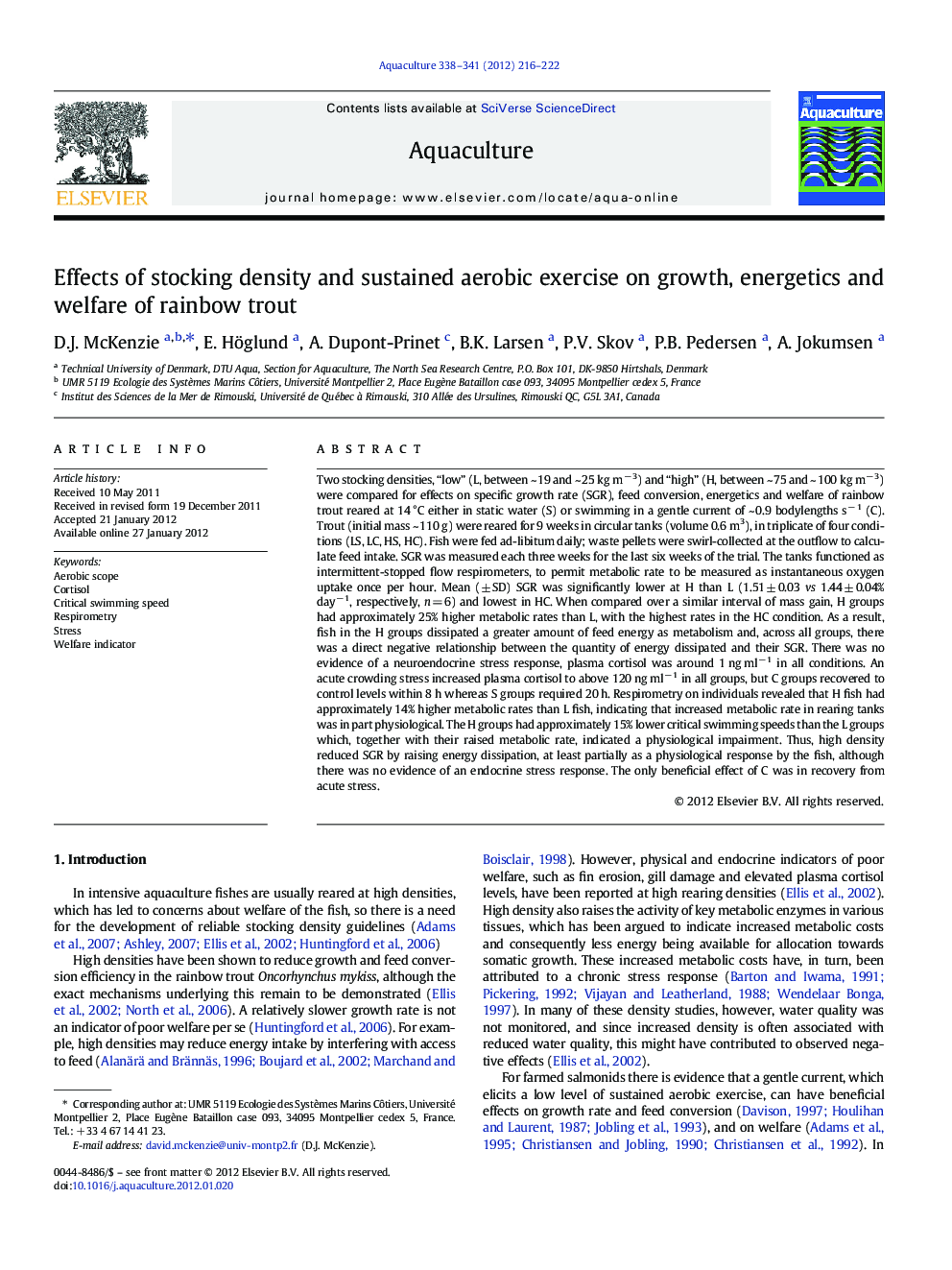| Article ID | Journal | Published Year | Pages | File Type |
|---|---|---|---|---|
| 8495866 | Aquaculture | 2012 | 7 Pages |
Abstract
Two stocking densities, “low” (L, between ~ 19 and ~ 25 kg mâ 3) and “high” (H, between ~ 75 and ~ 100 kg mâ 3) were compared for effects on specific growth rate (SGR), feed conversion, energetics and welfare of rainbow trout reared at 14 °C either in static water (S) or swimming in a gentle current of ~ 0.9 bodylengths sâ 1 (C). Trout (initial mass ~ 110 g) were reared for 9 weeks in circular tanks (volume 0.6 m3), in triplicate of four conditions (LS, LC, HS, HC). Fish were fed ad-libitum daily; waste pellets were swirl-collected at the outflow to calculate feed intake. SGR was measured each three weeks for the last six weeks of the trial. The tanks functioned as intermittent-stopped flow respirometers, to permit metabolic rate to be measured as instantaneous oxygen uptake once per hour. Mean (± SD) SGR was significantly lower at H than L (1.51 ± 0.03 vs 1.44 ± 0.04% dayâ 1, respectively, n = 6) and lowest in HC. When compared over a similar interval of mass gain, H groups had approximately 25% higher metabolic rates than L, with the highest rates in the HC condition. As a result, fish in the H groups dissipated a greater amount of feed energy as metabolism and, across all groups, there was a direct negative relationship between the quantity of energy dissipated and their SGR. There was no evidence of a neuroendocrine stress response, plasma cortisol was around 1 ng mlâ 1 in all conditions. An acute crowding stress increased plasma cortisol to above 120 ng mlâ 1 in all groups, but C groups recovered to control levels within 8 h whereas S groups required 20 h. Respirometry on individuals revealed that H fish had approximately 14% higher metabolic rates than L fish, indicating that increased metabolic rate in rearing tanks was in part physiological. The H groups had approximately 15% lower critical swimming speeds than the L groups which, together with their raised metabolic rate, indicated a physiological impairment. Thus, high density reduced SGR by raising energy dissipation, at least partially as a physiological response by the fish, although there was no evidence of an endocrine stress response. The only beneficial effect of C was in recovery from acute stress.
Related Topics
Life Sciences
Agricultural and Biological Sciences
Aquatic Science
Authors
D.J. McKenzie, E. Höglund, A. Dupont-Prinet, B.K. Larsen, P.V. Skov, P.B. Pedersen, A. Jokumsen,
